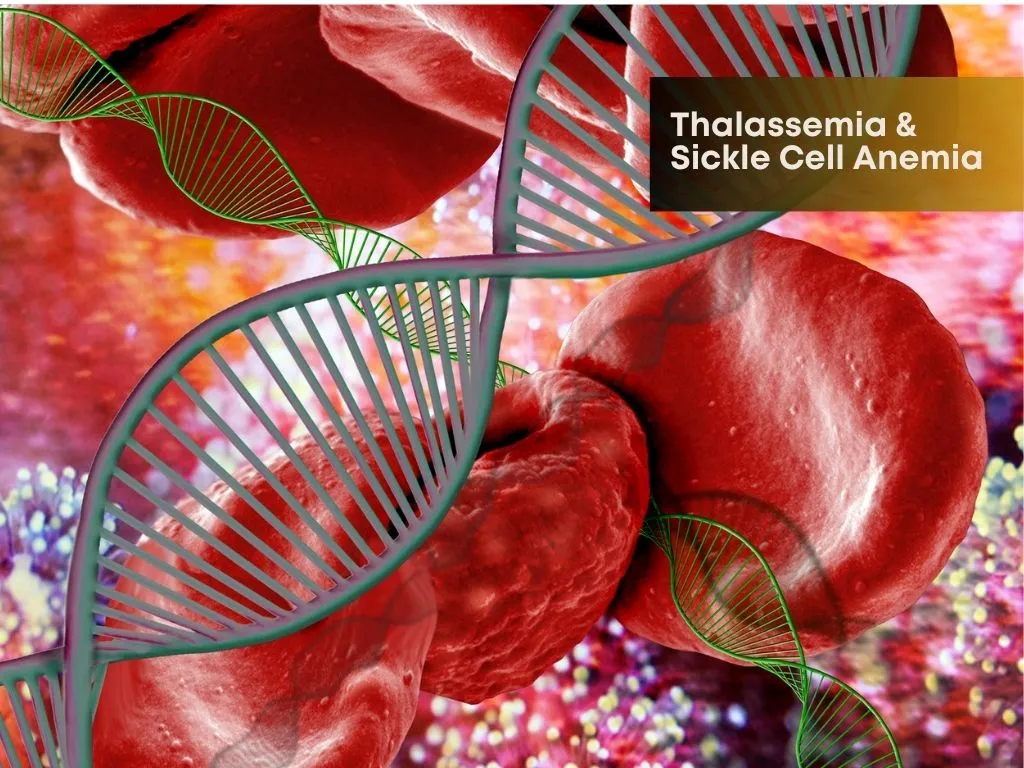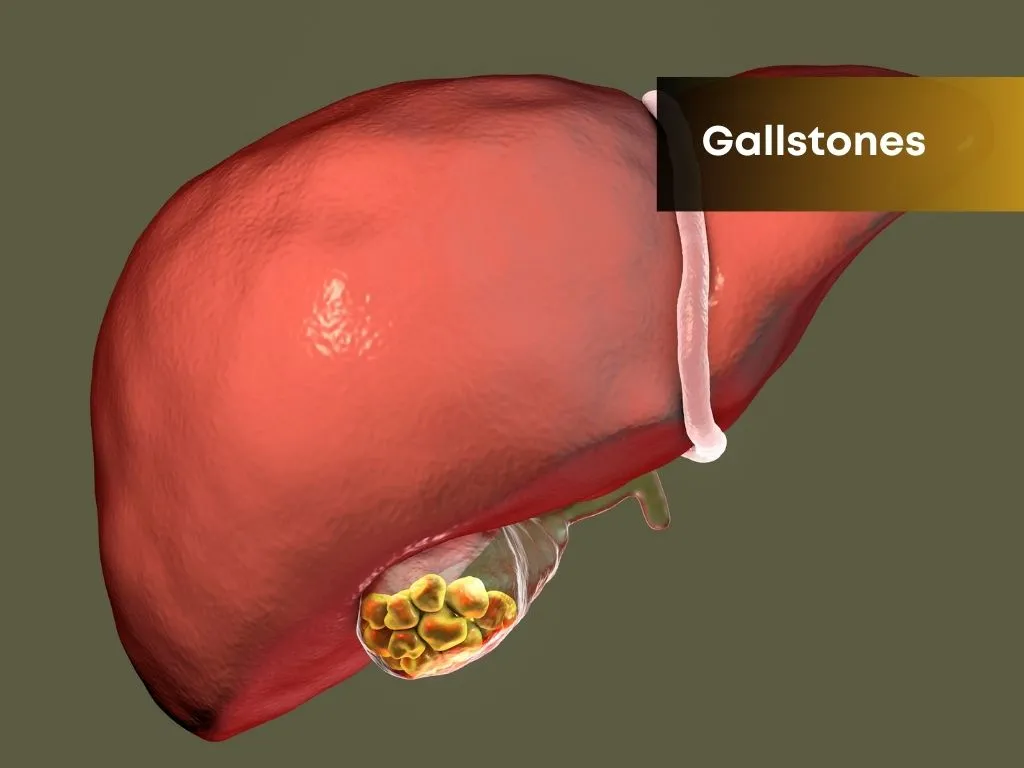Overview
Thalassemia and sickle cell anemia are inherited blood disorders that affect the body's ability to produce healthy red blood cells.Thalassemia is a group of inherited blood disorders that affect the production of hemoglobin, the protein in red blood cells that carries oxygen. People with Thalassemia have abnormal hemoglobin production, which leads to anemia and can cause fatigue, weakness, and other health problems.Sickle cell anemia is a genetic disorder in which the body produces abnormal hemoglobin, causing red blood cells to become rigid and sickle-shaped. These misshapen cells can stick together and block small blood vessels, leading to pain, organ damage, and a range of other complications.
Causes
Thalassemia: Reduced Hemoglobin Production: Thalassemia arises from mutations in either the alpha or beta Globin genes,which are vital for producing the protein chains that form hemoglobinThese mutations can be:
Deletions: Parts of the gene are missing, leading to decreased production of specific Globin chains.Point mutations: Single nucleotide changes disrupt the gene's function, again lowering Globin production. Severity Impact: The severity of Thalassemia depends on the type and number of mutated genes inherited. Alpha Thalassemia: Severity ranges from mild (minor deletions) to life-threatening (absence of alpha Globin).Beta Thalassemia: Can vary from mild (one beta gene mutated) to severe (both beta genes mutated).
Sickle Cell Anemia:
Single Mutation: This condition stems from a single point mutation in the beta globin gene, called the HBS mutation.Abnormal Hemoglobin: This mutation creates abnormal beta Globin chains that, under low oxygen conditions, stick together.Sickled Red Blood Cells: The aggregated globin chains cause red blood cells to become rigid and sickle-shaped.Blocked Blood Vessels: These misshapen cells struggle to flow through blood vessels, leading to blockages and tissue damage.Inheritance: Both Thalassemia and Sickle Cell Anemia follow autosomal recessive inheritance pattern.Both parents must carry at least one mutated gene for a child to have the disease.Carriers typically don't show symptoms but can pass the gene to their children.
Symptoms
Symptoms of Thalassemia and sickle cell anemia can vary depending on the severity of the condition.
Here are some common symptoms for each:Thalassemia:1. Fatigue2. Weakness3. Pale or yellowish skin4. Facial bone deformities (in more severe cases)5. Slow growth and delayed puberty (in children)Sickle Cell Anemia:1. Pain, often in the joints, abdomen, or chest2. Fatigue or fussiness, especially in children3. Swelling in the hands and feet4. Frequent infections5. Delayed growth and puberty in children
Treatment: Modern Medicine
Blood Transfusions: Regular blood transfusions can help maintain healthy levels of red blood cells in individuals with thalassemia and sickle cell anemia. This can alleviate symptoms such as anemia and fatigue.Iron Chelation Therapy: Excess iron buildup is common in individuals receiving frequent blood transfusions. Iron chelation therapy helps remove excess iron from the body to prevent organ damage.Bone Marrow Transplant: For severe cases of thalassemia and sickle cell anemia, a bone marrow transplant may be considered. This procedure aims to replace damaged or defective bone marrow with healthy stem cells from a compatible donor.Hydroxyurea: This medication is often prescribed for sickle cell anemia to increase fetal hemoglobin levels, which can help reduce the frequency and severity of pain crises and other complications.Pain Management: Medications such as nonsteroidal anti-inflammatory drugs (NSAIDs), opioids, and other pain relievers may be prescribed to manage pain associated with sickle cell crises.Antibiotics and Vaccinations: Individuals with sickle cell anemia are at higher risk of infections. Antibiotics and vaccinations are often recommended to prevent infections, particularly in children.Folic Acid Supplements: Folic acid supplementation helps support red blood cell production.
Treatment: Traditional Medicine
Thalassemia:
Herbal Supplements: Some traditional herbal remedies may be used to boost overall health and support the immune system. Examples include ginseng, astragalus, and licorice root. However, the safety and efficacy of these herbs in managing thalassemia have not been scientifically proven, and they may interact with medications or cause side effects.Dietary Modifications: Traditional dietary practices may involve consuming certain foods believed to improve blood health. Examples include foods rich in iron, vitamin C (to enhance iron absorption), and folate (to support red blood cell production).Ayurvedic Medicine: Ayurvedic practices, originating from India, may include herbal remedies, dietary changes, and lifestyle modifications tailored to balance the body's energies (doshas) and promote overall well-being. However, specific treatments for thalassemia would require careful consideration and consultation with a qualified Ayurvedic practitioner.Sickle Cell Anemia:
Herbal Teas and Supplements: Traditional herbal teas or supplements may be used to alleviate symptoms such as pain and inflammation associated with sickle cell anemia. Examples include ginger tea, turmeric, and Boswellia serrata (Indian frankincense). However, scientific evidence supporting their effectiveness in managing sickle cell symptoms is limited.Hydrotherapy: Some traditional practices involve using water therapies, such as warm baths or hot compresses, to relieve pain and promote relaxation during sickle cell crises. However, it's essential to ensure water temperatures are safe and not excessively hot, which could potentially worsen symptoms or cause burns.Massage Therapy: Massage therapy may be used to alleviate muscle tension and improve circulation, potentially providing relief during sickle cell crises. Gentle massage techniques should be employed to avoid exacerbating pain or causing injury.Traditional Medicine Systems: Various traditional medicine systems, such as Traditional Chinese Medicine (TCM) or African traditional medicine, may offer holistic approaches to managing sickle cell anemia through herbal remedies, acupuncture, dietary recommendations, and lifestyle modifications. However, individualized treatment plans should be developed in consultation with practitioners experienced in these systems and integrated with modern medical care.
Caution
Carrier screening: This involves
testing individuals, especially those from high-risk populations, to see if
they carry one mutated gene for either Thalassemia or Sickle Cell Anemia.Genetic counseling: If carrier
screening reveals a risk, genetic counseling can help individuals understand
the implications and make informed decisions about family planning and prenatal
testingPrenatal testing: This allows pregnant women to check
for the presence of Thalassemia or Sickle Cell Anemia in their developing
fetus, enabling informed choices about the pregnancy.
Prevention
Marriage counseling: In communities
where these disorders are prevalent, premarital counseling can help couples
understand their carrier status and the potential risks to their offspring.Public awareness campaigns: Educating the
public about these conditions, carrier screening, and genetic counseling
options can encourage early diagnosis and informed decision-making.Research and development: Ongoing research
focuses on gene therapy and other potential treatments to eliminate or modify
the faulty genes responsible for these diseases.
 Nalamaree Team
Nalamaree Team





















.jpg.webp)
